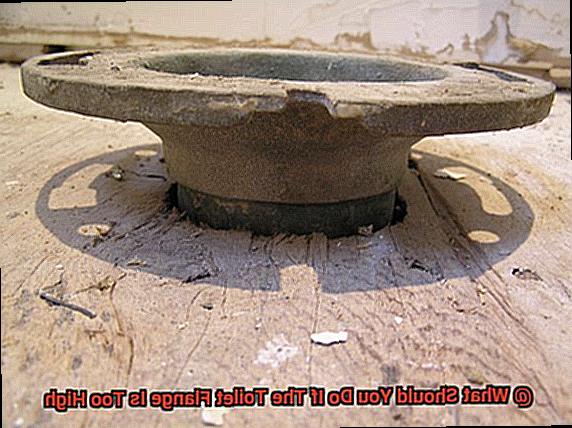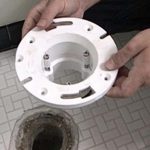Are you having trouble with your toilet flange? This is a common plumbing problem that can be tricky to solve.
But don’t worry – we’ve got the answers you need.
In this blog post, we’ll show you how to determine if your toilet flange is too high and what to do about it. We’ll also give you tips on how to prevent this issue from happening again in the future.
So grab your toolbox and let’s get started.
Contents
- 1 Identifying if the Toilet Flange is Too High
- 2 Reasons why the Toilet Flange may be Too High
- 3 Can You Reposition a Toilet Flange?
- 4 How to Reposition a Toilet Flange
- 5 What Should You Do If The Toilet Flange Is Too High
- 6 Other Solutions for When the Toilet Flange Is Too High
- 7 What Happens If You Don’t Fix the Problem?
- 8 The Benefits of Fixing the Problem
- 9 Conclusion
Identifying if the Toilet Flange is Too High
It’s an important question to answer because a flange that is too high can lead to leaks and other plumbing issues. Here’s a guide on how to identify if the toilet flange is too high.
Start by measuring from the floor up to the top of the flange. If it is more than 1/4 inch above the floor, then it is too high. This can occur due to incorrect installation or uneven floors.
If your toilet flange is indeed too high, there are several ways to remedy the situation. You can reposition or replace the existing flange; install a new flange and wax ring; or raise the floor around the toilet. Each solution has its own advantages and disadvantages, so make sure you do your research before making a decision.
Identifying if your toilet flange is too high doesn’t have to be complicated. With just a few measurements and some knowledge of your options, you can easily determine whether you need to adjust your toilet flange and take action accordingly.
Reasons why the Toilet Flange may be Too High
Many households experience this problem, but why is it happening? Here are three common reasons why the toilet flange may be too high.
Improper installation is often the culprit. When measurements aren’t taken correctly or a plumber or DIYer doesn’t know how to install a toilet flange properly, it can result in an overly high flange.
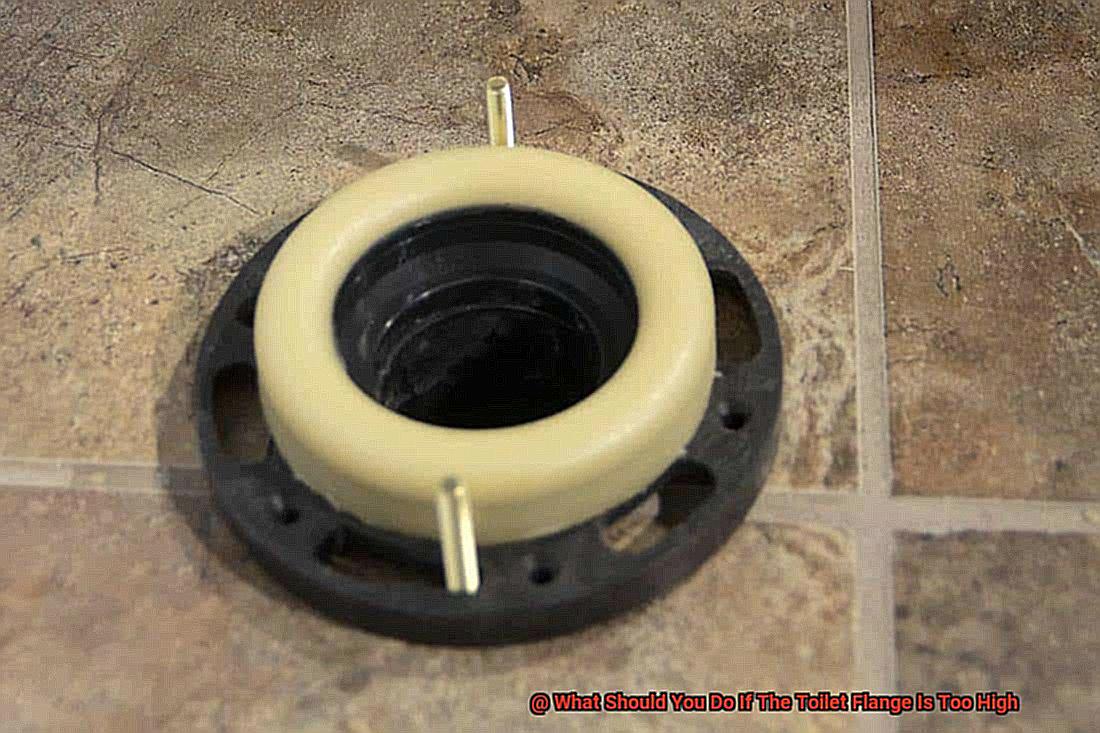
Floor variations can also be a factor. Over time, floors may settle and cause the toilet flange to rise higher than when it was first installed. This is especially true in older homes.
Finally, low-quality materials can cause the toilet flange to be too high because they are more prone to warping and shifting than other materials.
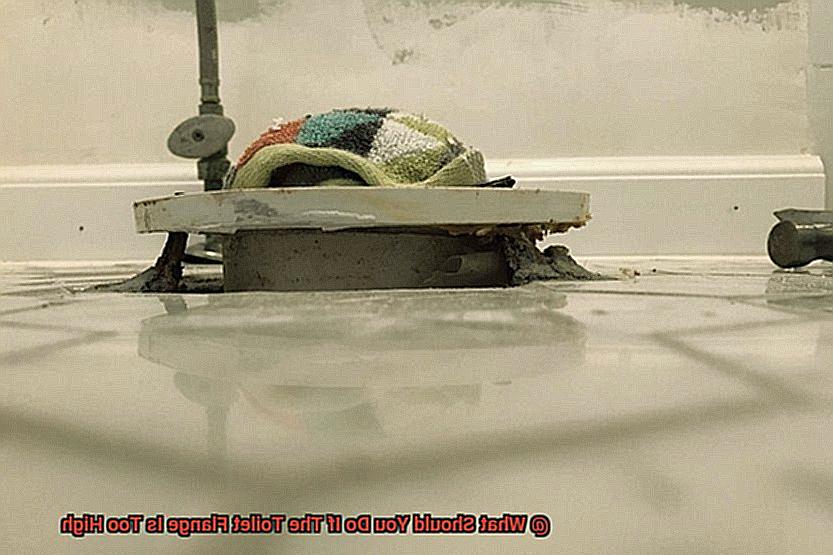
If your toilet flange is too large, addressing the issue quickly is important to avoid any further damage or plumbing issues down the line.
Can You Reposition a Toilet Flange?
Have you ever wondered if it’s possible to reposition a toilet flange? The answer is yes! Although it may seem daunting, this simple DIY project can be done in a few steps with the right tools.
First, measure the distance between the bottom of the toilet and the floor. This will help you determine the right size flange for your needs. Next, check for any potential obstructions, such as pipes or walls, that could prevent you from installing the new flange properly.
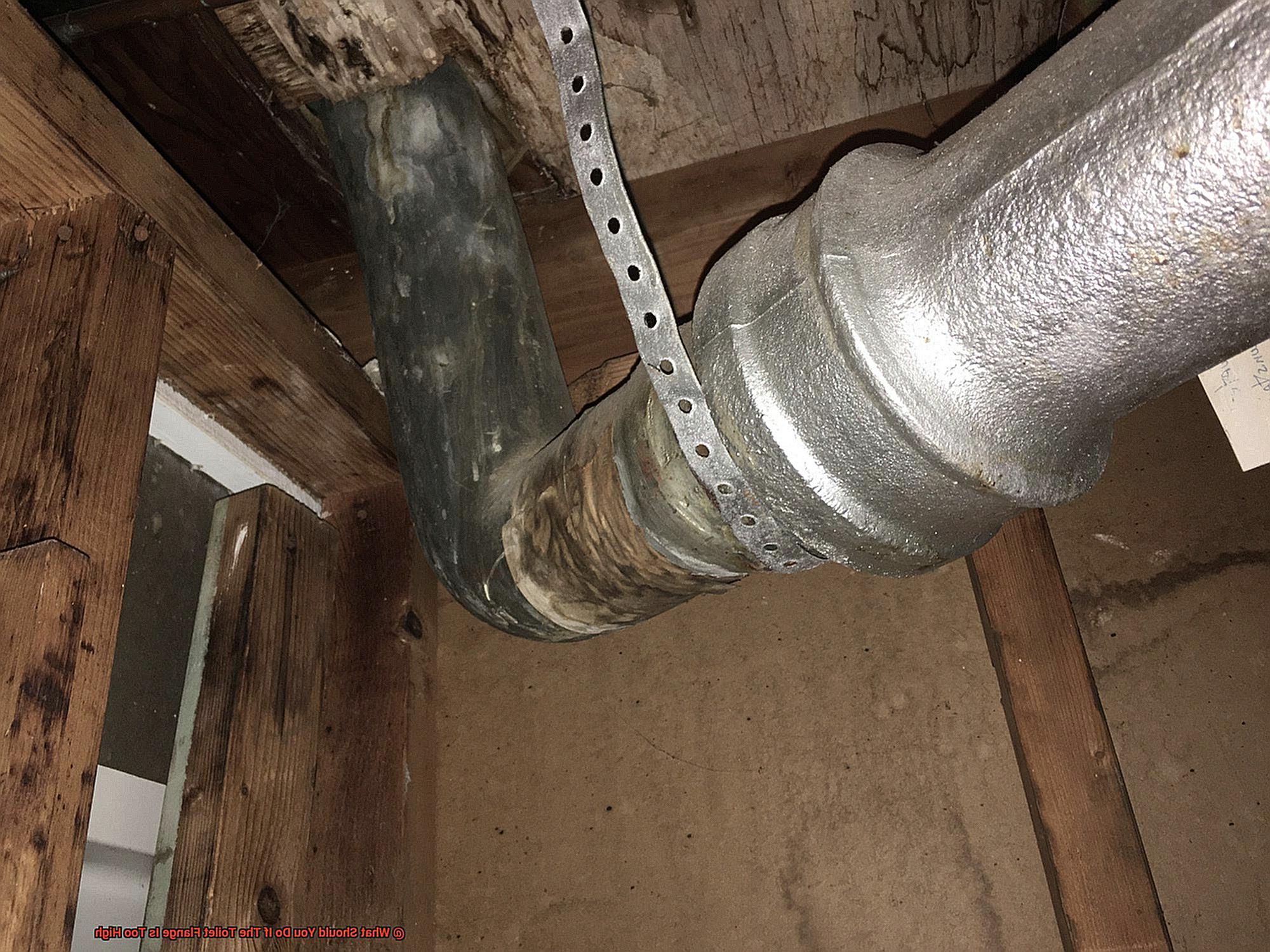
Once you have everything set up, it’s time to remove the old flange and replace it with a new one. Make sure to use sealant or caulk around the edges of the new flange for a tight fit. Finally, test your work by running water through the toilet and looking for any leaks.
How to Reposition a Toilet Flange
Having a correctly positioned toilet flange is essential for ensuring a tight seal between the toilet and the drain pipe. If the flange is too high, it can cause problems during installation and could lead to leaks.
Fortunately, repositioning a toilet flange isn’t complicated and can be done with basic tools. In this guide, we’ll take you through all of the steps required to reposition your toilet flange.
Removing Your Old Toilet Flange
The first step in repositioning your toilet flange is to open the old one by unscrewing the bolts from underneath.
Once all of the screws have been removed, you should be able to pull out your old flange from its place on the subfloor.
Be sure to save all of your screws and bolts as you will need them later on when building your new flange.
Measuring for Your New Toilet Flange
After removing your old flange, it’s time to measure for your new one. You should measure the distance from the floor to where you want to position your new toilet flange and mark it with a pencil or marker so you know exactly where it needs to go when installing it later on.
Cutting an Opening for Your New Toilet Flange
After measuring your new toilet flange, you’ll need to use a saw or drill to cut out an opening in the subfloor so it can be installed properly.
When cutting an opening for your new toilet flange, take extra precautions because any mistakes could result in delays in installation later on down the line.
Installing Your New Toilet Flange
Once you’ve cut an opening for your new flange, secure it with screws or bolts that are appropriate for whatever type of wood or concrete subfloor you’re working with.
After that, make sure all of your connections are tight and secure before testing out your newly repositioned toilet flange and ensuring there are no leaks or other issues before using it again.
What Should You Do If The Toilet Flange Is Too High
Checking the Toilet Flange Height
When it comes to installing a toilet, one of the most important steps is ensuring the toilet flange is at the right height. To check the height of the flange, start by removing the toilet from its base.
Then, use a measuring tape to measure the distance between the floor and the top of the flange.
If the flange is more than an inch higher than the floor, then it is too high and needs to be adjusted.
Adjusting The Toilet Flange Height
If you find that your toilet flange is too high, you can adjust it by using a hacksaw or a reciprocating saw.
Start by cutting off any excess plastic that is sticking up from the flange. Then, use a file to smooth out any rough edges.
Finally, use a level to make sure that the flange is even with the floor.
Gluing Fiberglass To Metal
Once you have adjusted the toilet flange height, you can begin gluing fiberglass to metal. Start by cleaning both surfaces with a cloth and rubbing alcohol.
Then, apply an adhesive primer to both surfaces and let them dry for at least 30 minutes.
Once the primer has dried, apply a thin layer of epoxy glue to both surfaces and press them together firmly. Allow the glue to cure for at least 24 hours before using the toilet again.
Other Solutions for When the Toilet Flange Is Too High
Are you having trouble with your toilet flange because it’s too high? Don’t worry, there are a few solutions that can help.
The first option is to reposition the flange. This will require you to remove the toilet and use a hacksaw or reciprocating saw to cut off the bottom of the flange. Once this is done, you can reinstall the toilet.
Another option is to purchase a new flange that has been designed for use with higher toilets, such as those made by Oatey or Sioux Chief. These flanges fit into existing drain lines and provide extra height for your toilet.
You can also use a wax ring extender which sits between the toilet and the flange, providing additional support and stability.
If none of these solutions work, you may need to hire a plumber to install a new drain line which will allow you to install a new flange at the correct height.
What Happens If You Don’t Fix the Problem?
When a toilet flange is too large, it can cause serious problems. Your toilet can become unsteady and unstable, resulting in damage to the bowl or tank that will cost you money to repair.
Furthermore, water can leak out of the back of the toilet and onto the floor, causing even more damage. In extreme cases, this could lead to sewage backups in your home – an expensive and unpleasant mess that no one wants to deal with.
To avoid these issues, it is essential to fix the problem as soon as possible.
The Benefits of Fixing the Problem
This issue is common and can cause a lot of costly repairs if left unchecked. But the good news is that fixing this problem is easy and comes with many perks!
By taking care of a high toilet flange, you’ll be able to maximize the efficiency of your plumbing system. This means no more clogs or misalignments, and less water waste.
Plus, it will make sure your toilet is secure and stable, so there’s no risk of it shifting or moving due to an imbalanced flange.
Conclusion
In conclusion, gluing fiberglass to metal is a great way to create strong and durable bonds. It is important to ensure that the surfaces are properly prepared before any adhesive is applied. The surface should be clean and free of any dirt or grease.
Additionally, it is important to make sure that the toilet flange is not too high for the adhesive to adhere properly.
If the flange is too high, then it may be necessary to adjust the flange or use an alternative adhesive.
With the right preparation and adhesive, it is possible to create strong and lasting bonds between fiberglass and metal.

